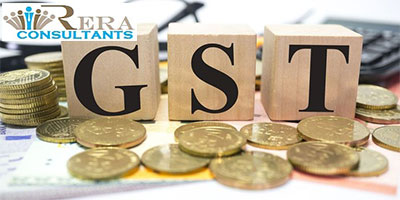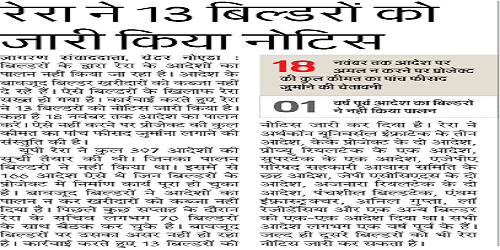It has almost been a year that the Goods and Service Tax (GST) and the Real Estate Regulation and Development Act, 2016 (RERA) was rolled out. The real estate industry over the last couple of years has seen a sea change as far as regulations were concerned. While the RERA ensured that consumers are further empowered, the GST aimed at bringing
in the much-needed price
equivalence by streamlining the tax structure. It has been a mixed bag as far as the industry is concerned.
Empowering Consumers
The rollout of RERA and GST meant that a lot of unorganized players had to shut shop or fall in line, with the consumers given the much-needed redressal mechanisms. Earlier the consumers were left with no choice but to move the court for any wrongdoings by the developers, but today they can approach the RERA and the verdicts from the RERA are very quick compared to any other redressal forums.
The buyers can also seek to withdraw their booking in case there is a delay in the delivering the house by the developer. In that case, the developer has to return the entire amount along with the interest to the consumer.
For instance, The Maharashtra Regulatory Authority (MahaRERA) is considering bringing real estate websites under the ambit of RERA. This would mean that the content or listings that will be pushed out through these portals are also likely to be monitored.
Much needed discipline
The developers are also restricted from diverting cash flow from buyers of a particular project to any other project by RERA. The developer is also mandated to inform the customer about the floor plans and other details pertaining to the construction and the same need to be documented. Earlier there were instances where developers would change the building plans according to their whims and fancies, but today there is a fear amongst the developers of falling under the eyes of the watchdog. Most importantly any delay in handing out the possession of a property would invite serious trouble for the developers in the form of hefty penalties.
Taxation Simplified
The main purpose of bringing the real estate sector under the goods and service tax was to get away with the various indirect tax burdens of VAT, Service Tax, excise, stamp duty, registration fees etc. While the consumer still needs to pay the stamp duty and registration fees, the other taxes have been done away with. At present, the real estate sector invites a GST at the rate of 12% with full input tax credit.
However, there is no GST for ready to move in buildings.
From a developers’ perspective, the rollout of GST is an extremely positive step that has happened in the industry. Earlier, the developer had to pay various indirect taxes and duties during the construction of a property which he would further pass on to the consumers. Now with the rollout of GST everything is bundled into one.
While a consumer may argue that GST at the rate of 12% is on a higher side, but it is important to note that the developers will have to mandatorily pass on the input tax credit benefits to the consumers which will effectively reduce the tax rates in the hands of the consumers. There is a much-needed clarity that is required as far as Input Tax Credit is concerned.
Some concerns still remain
Recent studies by various agencies have sugge
sted that close to 25,000 real estate projects have been registered under RERA. However, what is important to note is that barring Maharashtra which accounted for 62% of these registrations, other states seemed to be lethargic in implementing RERA. The unorganized players are facing the heat as they do not seem to have a viable business model to suit the RERA requirements.
There also exists lot of concerns from the bureaucracy with no checks on the local bodies who are responsible for giving approvals and clearances. There are no provisions to monitor the approval process.
As far as the GST goes, the entire industry has been seeking clarity on passing on the benefits of Input Cost Credit to the consumers.
Source form :- https://www.entrepreneur.com/article/316579





